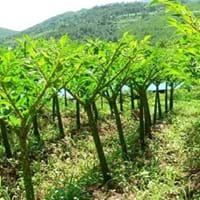Life Span
Perennial
Perennial
Type
Flowering Plants
Bulb or Corm or Tuber
Origin
Mediterranean, North Africa, Northern America
Southeastern Asia
Types
Anthony Peak Lupine, Silver Bush, Garden Lupine, Spider Lupine, Adonis Lupine
Amorphophallus yunnanensis , Amorphophallus titanum
Habitat
Pine barrens, Sandy areas
Loamy soils, Well Drained
USDA Hardiness Zone
3-7
6-11
Sunset Zone
1a, 1b, 2a, 2b, 3a, 3b, 4, 5, 6, 7, 14, 15, 16, 17
21,22
Habit
Upright/Erect
Upright/Erect
Flower Color
Blue, Pink, White
Purple, Burgundy
Flower Color Modifier
Not Available
Bicolor
Fruit Color
Not Available
Not Available
Leaf Color in Spring
Light Green
Not Available
Leaf Color in Summer
Green
Light Green
Leaf Color in Fall
Green
Several shades of Green
Leaf Color in Winter
Not Available
Light Green
Leaf Shape
Oblovate
Pinnate
Plant Season
Summer
Spring, Summer, Fall
Sunlight
Full Sun, Part sun
Partial Sun, Partial shade
Type of Soil
Loose, Moist
Loam
The pH of Soil
Slightly Acidic
Acidic, Neutral
Soil Drainage
Well drained
Well drained
Bloom Time
Late Spring, Summer
Spring, Late Spring
Tolerances
Not Available
Drought
Where to Plant?
Ground
Ground
How to Plant?
Seedlings
Seedlings, Transplanting, Vegetative Reproduction
Plant Maintenance
Medium
Medium
Watering Requirements
Form a Soil ring to water efficiently, Keep the ground moist but not water-logged, Requires a lot of watering, Water in morning to avoid prompting diseases
Allow to dry out slightly between watering, Do Not over Water
In Summer
Lots of watering
Lots of watering
In Spring
Moderate
Moderate
In Winter
Average Water
Average Water
Soil pH
Slightly Acidic
Acidic, Neutral
Soil Type
Loose, Moist
Loam
Soil Drainage Capacity
Well drained
Well drained
Sun Exposure
Full Sun, Part sun
Partial Sun, Partial shade
Pruning
Prune ocassionally
Generally pruned to waist height, Remove damaged leaves, Remove dead branches, Remove dead leaves
Fertilizers
All-Purpose Liquid Fertilizer
fertilize in growing season, organic fertlizers
Pests and Diseases
Aphids, Fusarium wilt, Root rot, Thripes
Nematodes, Root mealy bugs
Plant Tolerance
Drought
Dry soil, Full Sun, Shade areas
Flower Petal Number
Single
Single
Foliage Texture
Medium
Bold
Foliage Sheen
Matte
Matte
Attracts
Bees
Aphids, Bugs, Butterflies
Allergy
Abdominal pain, Asthma, Nausea, Swelling in the face, Vomiting
gastro-intestinal problems, Swelling in mouth
Aesthetic Uses
Showy Purposes
Not Used For Aesthetic Purpose
Beauty Benefits
Not Available
Glowing Skin, Maintains teeth healthy, Weightloss
Environmental Uses
Air purification
Food for animals, Food for birds, Very little waste
Medicinal Uses
Anthelmintic, Diuretic, Treatment of ulcers
Asthma, Burns, Cough, Diabetes
Part of Plant Used
Flowers, Seeds
Bulbs, Leaves
Other Uses
Showy Purposes, Used as Ornamental plant, Used for fragrance
Animal Feed, Can be made into a herbal tea, Cosmetics
Used As Indoor Plant
No
No
Used As Outdoor Plant
Yes
Yes
Garden Design
Bedding Plant, Container, Feature Plant, Foundation, Rock Garden
Container, Edible, Feature Plant, Houseplant, Mixed Border, Tropical
Botanical Name
Lupinus
AMORPHOPHALLUS konjac
Common Name
Hybrid Lupine
Devil's Tongue, Elephant Yam, Konjac
In Hindi
वृक संयंत्र
Konjac
In German
lupine
Teufelszunge
In French
usine de lupin
konjac
In Spanish
planta de lupino
konjac
In Greek
φυτό λούπινο
Konjac
In Portuguese
tremoço planta
konjac
In Polish
łubin roślin
konjac
In Latin
Plinio herba
Konjac
Phylum
Magnoliophyta
Magnoliophyta
Class
Magnoliopsida
Liliopsida
Genus
Lupinus
Amorphophallus
Clade
Not Available
Angiosperms, Monocots
Tribe
Not Available
Thomsonieae
Subfamily
Faboideae
Aroideae
Number of Species
Not Available
Importance of Lupine and Konjac
Want to have the most appropriate plant for your garden? You might want to know the importance of Lupine and Konjac. Basically, these two plants vary in many aspects. Compare Lupine and Konjac as they differ in many characteristics such as their life, care, benefits, facts, etc. Every gardener must at least have the slightest clue about the plants he wants to plant in his garden. Compare their benefits, which differ in many ways like facts and uses. The medicinal use of Lupine is Anthelmintic, Diuretic and Treatment of ulcers whereas of Konjac is Asthma, Burns, Cough and Diabetes. Lupine has beauty benefits as follows: Not Available while Konjac has beauty benefits as follows: Not Available.
Compare Facts of Lupine vs Konjac
How to choose the best garden plant for your garden depending upon its facts? Here garden plant comparison will help you to solve this query. Compare the facts of Lupine vs Konjac and know which one to choose. As garden plants have benefits and other uses, allergy is also a major drawback of plants for some people. Allergic reactions of Lupine are Abdominal pain, Asthma, Nausea, Swelling in the face and Vomiting whereas of Konjac have gastro-intestinal problems and Swelling in mouth respectively. Having a fruit bearing plant in your garden can be a plus point of your garden. Lupine has no showy fruits and Konjac has no showy fruits. Also Lupine is flowering and Konjac is not flowering . You can compare Lupine and Konjac facts and facts of other plants too.





